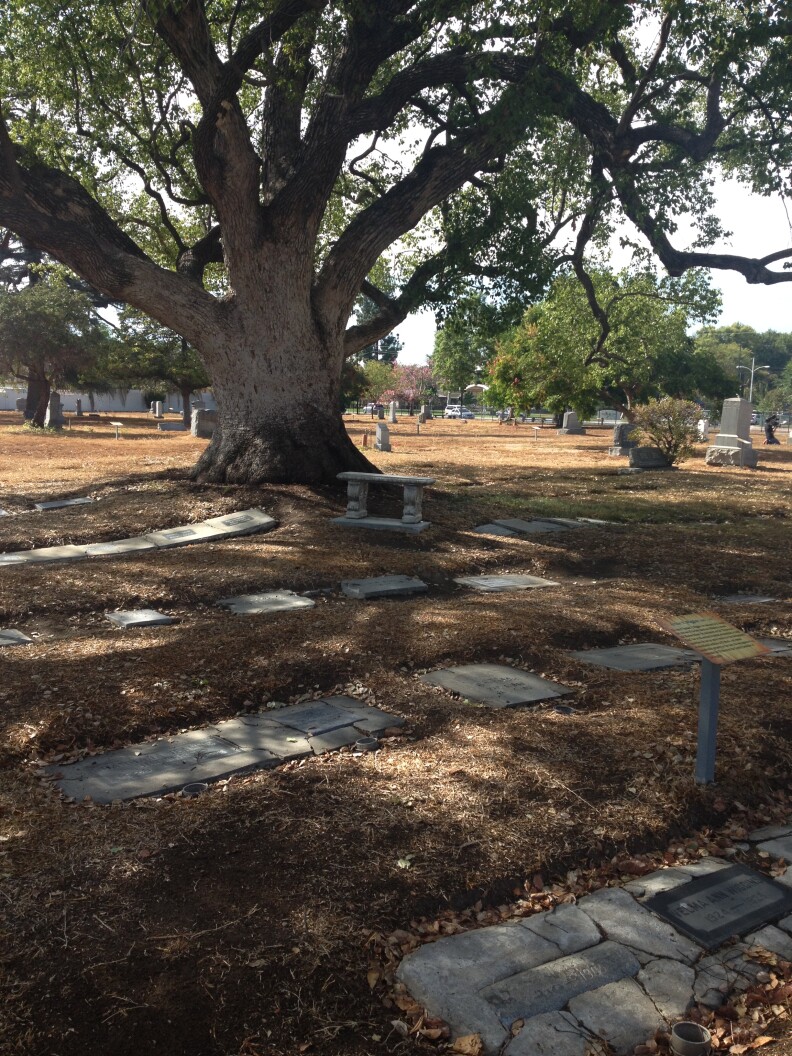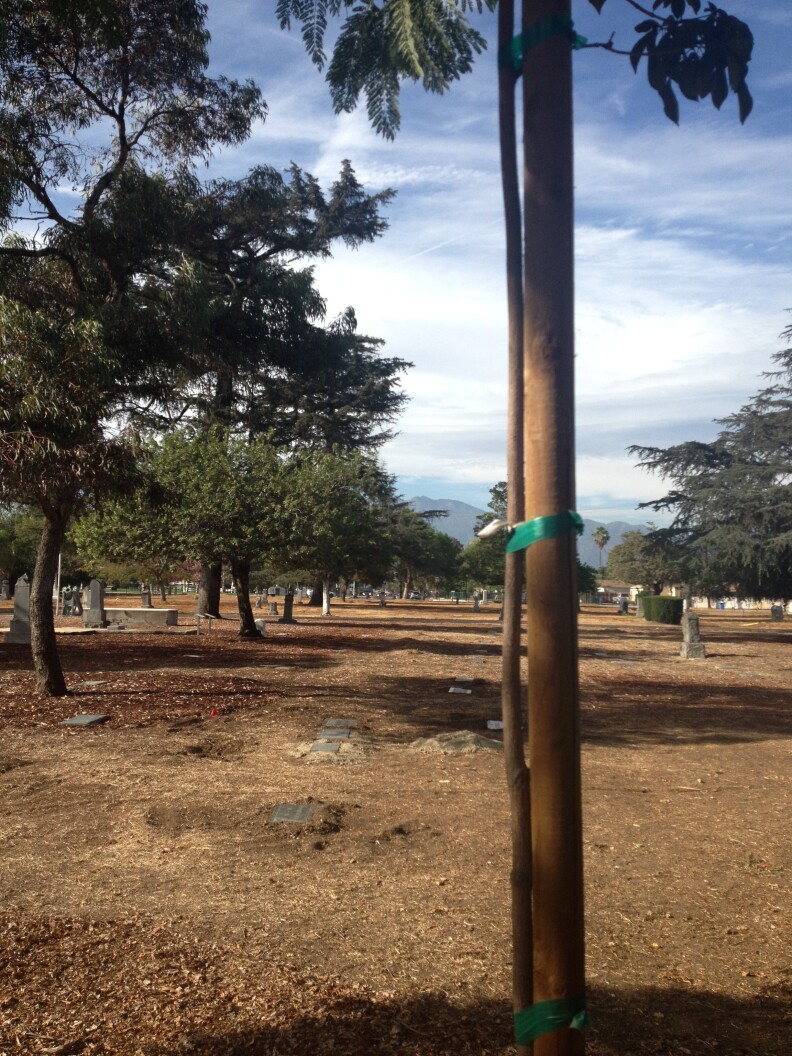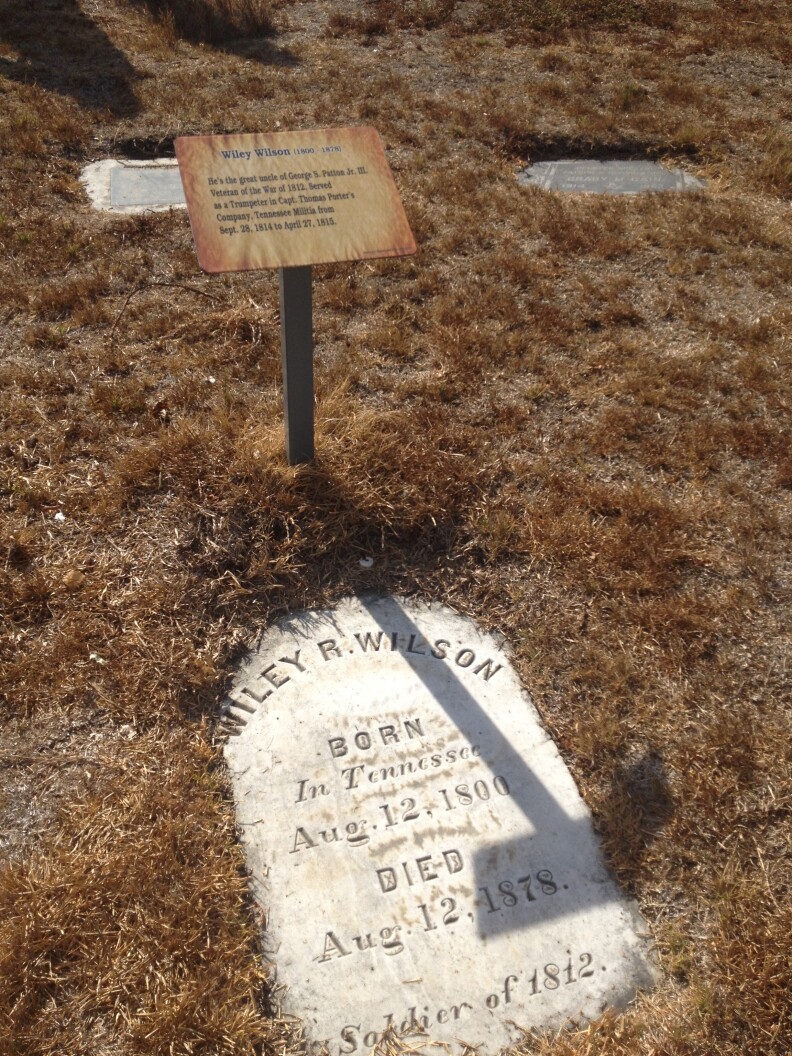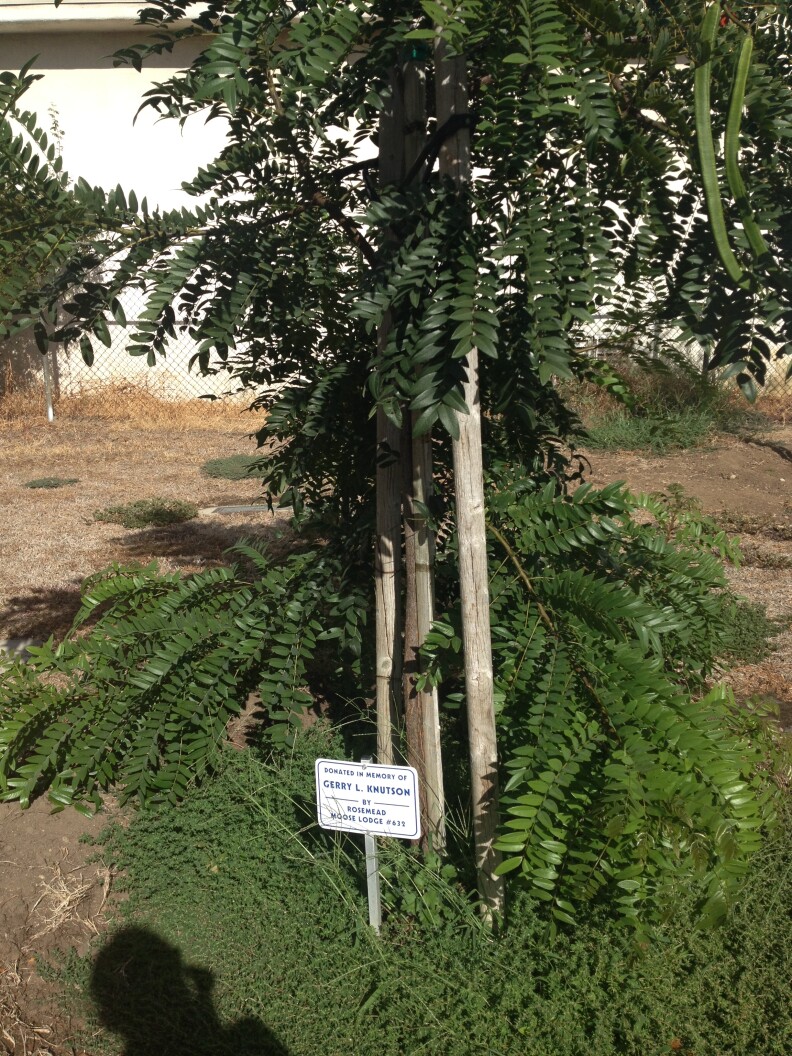Cemeteries rely on a lot of water to keep grounds nice for the departed. But when a water main thief shut the water off at a historic memorial park in Rosemead, California last year, the groundskeepers, fearing a worsening drought on the horizon, decided to leave the water off and let the grass go brown.
Joanne Russell Chavez is the President of the Board of Directors of the Savannah Memorial Park. It's the oldest non-sectarian cemetery in Southern California, and was established by some of the first settlers in the San Gabriel Valley.
The cemetery's Board is implementing plans to beat the drought by decreasing grass on the property by at least fifty percent. They're bringing in native and drought-tolerant plants, more trees, and mulch instead. In the process, the board of the non- profit park believes it will cut the water bill by 60-70 percent.
Don't people expect to see green, plush lawns at cemeteries, though? Yes, says Russell Chavez, but looking to the future, "if we no longer have any water, what can we do to still have a beautiful cemetery and preserve its historical value?"










